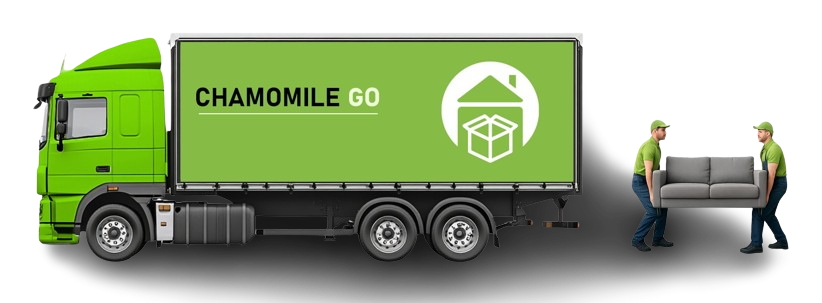How to move from state to state involves more than just packing boxes—it requires careful planning and preparation. People often consider relocating to another state for jobs, family, lifestyle changes, or a lower cost of living. Whatever the reason, moving to a different state can be stressful without a solid plan. To avoid unexpected expenses and last-minute chaos, organization is key. You will be guided through the entire process by this guide. We’ll assist in making your relocation easier, from organizing and packing to handling logistics and settling in. Moving to a different state can be a fulfilling and beneficial experience if done correctly.
Considerations for Relocating from One State to Another

Moving from one state to another is a major life decision that involves more than just packing boxes. Whether you’re relocating for a new job, family, or a change of scenery, it’s important to weigh several key factors before making the leap. When relocating to a different state, keep the following points in mind:
1. Cost of Living Differences
One of the biggest adjustments when moving to a different state is the cost of living. This includes:
- Rent and housing prices – A home that’s affordable in one state may be out of reach in another.
- Taxes – Look into state income tax, property tax, and sales tax rates.
- Utilities and transportation – Electricity, water, gas, and public transit costs can vary widely.
Understanding these differences can help you budget more effectively and avoid financial surprises.
2. Employment Opportunities
Investigate the employment market in your new state before relocating:
- What industries are growing?
- Are salaries comparable to your current area?
- Is your profession in demand?
You should also consider whether your current employer has offices in the new state or if remote work is a possibility.
3. State Laws and Regulations
Different states have different laws that can impact your day-to-day life:
- Vehicle registration and driver’s license – Some states have stricter timelines and fees.
- Healthcare systems – Medicaid eligibility and health insurance regulations vary.
- Insurance requirements – Auto and home insurance policies may need to be adjusted.
Make sure you understand the legal and bureaucratic changes that come with moving to a different state.
4. School Systems and Education
If you have children, evaluate the quality of the school systems in the area:
- Check school rankings and reviews.
- Explore public vs. private education options.
- Look into extracurricular activities and special programs.
When relocating from one state to another, this is an essential step to make sure your children have a seamless transition.
5. Lifestyle and Culture
Each state has its own culture and pace of life. Consider:
- Climate – Are you ready for hotter summers, colder winters, or more humidity?
- Social environment – Think about diversity, friendliness, and community vibe.
- Political climate – Some people prefer to live in a state that aligns with their values.
These factors can significantly affect your comfort and long-term happiness.
6. Moving Budget
Determine how much you can realistically spend on the move itself:
- Professional movers vs. DIY move
- Travel expenses – Gas, flights, hotels
- Temporary housing – If you don’t have a permanent place lined up
- Unexpected costs – Deposits, setup fees, etc.
A well-planned budget is essential to avoid stress and overspending when moving to a different state.
You can also read about How Do You Move Cats Across Country.
How to Move from State to State in 7 Easy Steps

Relocating to another state can feel overwhelming, but with a clear plan and the right support, it doesn’t have to be. Use this easy moving out of state checklist to ensure a stress-free and seamless transfer, whether you’re going for a new start, family, or employment.
1. Research Your New State
Before you pack a single box, spend time learning about your new location:
- Cost of living – Understand how expenses like housing, groceries, and taxes compare.
- Job market – Explore employment opportunities in your field.
- Housing options – Consider whether you’ll rent or buy, and research neighborhoods that suit your lifestyle.
This first step lays the foundation for a well-informed move.
2. Create a Moving Checklist
You may maintain organization by using a thorough moving out of state checklist. Break your tasks down by timeline:
- 8 weeks out: Start researching movers or truck rentals.
- 6 weeks out: Begin sorting and decluttering.
- 4 weeks out: Notify landlords, employers, and schools.
- 2 weeks out: Confirm travel plans and packing progress.
- Moving day: Final walkthrough, load truck, clean home.
Having a plan keeps the process manageable from start to finish.
3. Rent a truck or work with a moving company.
Decide if you’ll go the DIY route or hire professionals:
- Hiring movers saves time and physical labor but comes at a higher cost.
- Renting a truck is more budget-friendly but requires more effort.
4. Sort and Declutter
Don’t bring unnecessary items across state lines. Go through each room and decide what to:
- Keep
- Donate
- Sell
- Throw away
5. Change Your Address and Transfer Utilities
Don’t forget to update your info with key services:
- File a change of address with the USPS.
- To transfer or cancel services (gas, water, electricity, and internet), get in touch with the utility companies.
- Banks, insurance companies, and subscription services should update your address.
This step prevents service interruptions and lost mail.
6. Pack Strategically
Both ends of your move can be less stressful if you pack wisely:
- Indicate the room and contents of each box clearly.
- Stow crucial documents, toiletries, and clothing in an essentials bag.
- Use extra care with fragile items and valuables.
Efficient packing makes unpacking much easier when you arrive.
7. Prepare for Travel and Arrival
Plan your journey, especially if you’re driving:
- Map out your travel route and book accommodations if needed.
- Confirm move-in readiness—make sure utilities are on and keys are available.
- Keep contacts handy in case of emergencies or last-minute issues.
Need Packing Help in Los Angeles?
If you’re located in the Los Angeles area and need professional assistance, Chamomile Go offers reliable and affordable packing services in Los Angeles to make your move seamless. Whether you’re moving across the state or across the country, we’re here to help you pack with care and efficiency.
What to Do After Moving from One State to Another
You’ve completed the hard part—relocating to another state. But even after the boxes are unpacked, there are still some essential steps to take to fully settle into your new home. Here’s a checklist of important things to do after moving from one state to another:
1. Register Your Vehicle and Get a New Driver’s License
Each state has its own DMV rules and deadlines for new residents. As soon as you move:
- Register your vehicle with your new state’s DMV.
- Apply for a new driver’s license—some states require this within 30 days.
- Check for any required emissions or safety inspections.
This step is essential for staying compliant with local laws.
2. Register to Vote in Your New State
Your voter registration doesn’t automatically transfer when relocating to another state. Be sure to:
- Register to vote using your new address.
- Check deadlines for upcoming elections.
- Update your political party affiliation if necessary.
Getting registered ensures your voice counts in your new community.
3. Update Your Insurance Policies
Moving from one state to another often affects your insurance coverage. Review and update the following:
- Auto insurance – Premiums and requirements vary by state.
- Health insurance – Choose a new plan if your old one doesn’t cover your new area.
- Renters or homeowners insurance – Update your address and coverage details.
Make sure you’re protected under your new state’s policies.
4. Find New Healthcare Providers
Don’t wait until you’re sick to look for a doctor. After your move:
- Research and choose a primary care physician, dentist, and any specialists you need.
- Transfer your medical records.
- Locate nearby hospitals and urgent care centers.
It’s important to be prepared, especially when adjusting to a new environment.
5. Enroll Kids in School
If you have children, enrolling them in a new school is a top priority after relocating to another state:
- Research school districts and available programs.
- Gather any necessary documents (transcripts, immunization records).
- Schedule a school tour or orientation to help them adjust.
This helps your kids transition smoothly into their new routine.
6. Explore Your New Neighborhood
Now that the logistics are out of the way, take time to enjoy your new surroundings:
- Visit local parks, restaurants, and community centers.
- Introduce yourself to neighbors.
- Join local groups or clubs to make connections.
Exploring your neighborhood is one of the most rewarding parts of moving from one state to another.
Final Thoughts
Moving from state to state doesn’t have to be overwhelming when you have the right plan—and the right help. From planning and packing to settling in, every step counts. If you’re relocating to another state and need guidance or support, Chamomile Go is here for you. Have questions or need moving assistance? Contact us today and let us make your move smooth and stress-free!
FAQs
Q: How Do I Start Planning How To Move From State To State?
The first step in learning how to move from state to state is to research your new location—look into the cost of living, housing, job market, and local laws. Then, create a moving checklist with a clear timeline. Starting early gives you time to declutter, find movers or rent a truck, and handle important paperwork like address changes.
Q: What Is The Most Cost-Effective Way To Move From One State To Another?
If you’re looking for the most budget-friendly way to move from state to state, consider renting a moving truck and doing the packing yourself. For smaller moves, a portable moving container may also save money. Hiring professional movers can be more convenient but typically comes at a higher cost.
Q: How Do I Transfer My Driver’s License And Vehicle Registration When Moving From State To State?
After your move, visit the DMV in your new state as soon as possible—most states require you to transfer your license and vehicle registration within 30 to 60 days. Be prepared with identification, proof of residence, and your current title or registration documents.
Q: What Should I Include In A Checklist For How To Move From State To State?
A solid checklist for how to move from state to state should include: creating a moving budget, scheduling movers or a truck, changing your address with USPS, transferring utilities, packing and labeling boxes, registering your vehicle, updating insurance policies, and finding new healthcare providers or schools.
Q: How Can I Reduce Stress While Moving From State To State?
To reduce stress when moving from state to state, stay organized with a timeline and checklist, start packing early, and ask for help when needed. Hiring professionals like Chamomile Go can also take a huge load off your shoulders, especially if you’re juggling work, family, or other responsibilities.








